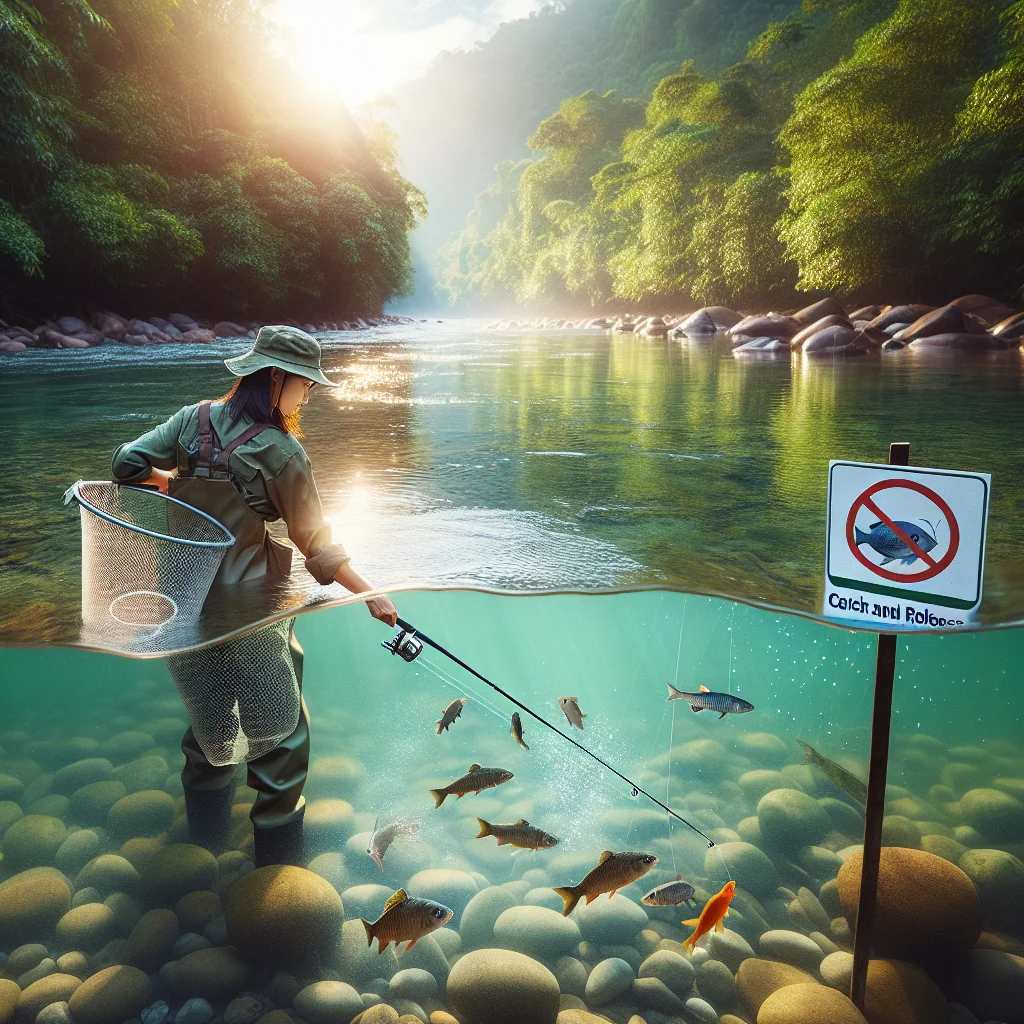Embracing Sustainable Fishing: Practices for Today’s Angler
May 27, 2025

Fishing is an enduring passion for many, intertwining adventure with a deep connection to nature. However, as environmental concerns rise, it's critical for anglers to adopt sustainable fishing practices. These methods not only ensure the longevity of fish populations but also protect the delicate ecosystems they inhabit. This article delves into practical strategies and techniques to help you fish responsibly while still enjoying a fulfilling outdoor experience.
Understanding Sustainable Fishing
Sustainable fishing encompasses a variety of practices aimed at maintaining fish populations, preserving their habitats, and minimizing the environmental impact of fishing activities. It is grounded in the principles of conservation, aiming to meet present fishing needs without jeopardizing future generations' ability to fish. Key aspects include making informed choices regarding the species you catch, using eco-friendly gear, and adhering to local regulations.
The Importance of Catch and Release
One of the cornerstones of sustainable fishing is the catch-and-release method. This practice involves capturing fish with the intent to return them unharmed to their natural habitat. Why is this important? Many species face declining populations due to overfishing, habitat destruction, and climate change. By practicing catch and release, anglers help sustain healthy fish stocks.
- Minimize Stress: Use barbless hooks to make it easier to unhook fish without causing injury.
- Quick Handling: Minimize the time fish spend out of water. Use wet hands or a damp cloth to handle them gently.
- Proper Tools: Invest in tools like fish grips and nets made of rubber, which are less harmful to fish' protective coatings.
Selecting Eco-friendly Fishing Gear
Your choice of fishing gear can significantly impact the environment. Here are some sustainable alternatives:
- Bamboo Rods: If you're in the market for a new fishing rod, consider bamboo rods, which are biodegradable and sustainable when sourced from responsible producers.
- Biodegradable Tackle: Choose lures and lines that break down over time, reducing pollution in waterways.
- Lead-Free Weights: Opt for non-toxic materials for sinkers and weights to help protect aquatic life from lead poisoning, which is harmful to fish and other animals in the food chain.
Supporting Conservation Efforts
Engaging with local conservation initiatives can help protect fishing habitats. Many organizations focus on restoring habitats, educating anglers, and advocating for policies that promote sustainable practices. Here's how you can get involved:
- Volunteer: Participate in local clean-up efforts or fish stocking programs.
- Educate Yourself: Attend workshops or webinars on environmental issues affecting your local fishing spots.
- Advocate: Support legislation that prioritizes sustainable fisheries and habitat protections.
Choosing Sustainable Species
Knowing which fish species are sustainable to catch is crucial for conscientious anglers. Overfishing affects certain species, so it's important to stay informed about local stocks. Resources like the Marine Stewardship Council (MSC) or the Seafood Watch program can help guide your choices by indicating which species are within safe catch limits.
- Avoid Overfished Species: Familiarize yourself with the local guidelines on which fish are depleted.
- Opt for Farmed: When it comes to consumption, consider farmed fish that utilize sustainable practices, contributing to less pressure on wild populations.
Fishing Regulations and Labels
Fishing regulations vary by region and are designed to preserve aquatic ecosystems. Always check local regulations regarding:
- Size and Bag Limits: Adhere to rules regarding how many fish you can catch and their size to promote healthy populations.
- Seasonal Restrictions: Respect closed seasons to allow fish to spawn and reproduce.
Look for sustainability certifications on seafood products from stores, which can indicate responsible fishing practices.
The Role of Education and Awareness
Education is vital to fostering a community of responsible anglers. Share knowledge about sustainable practices within your fishing group or online communities. By raising awareness of sustainable fishing methods, you contribute to a culture that prioritizes the health of our waters.
Resources for Sustainable Anglers
Several organizations and online resources can help streamline your learning about sustainable fishing:
- The World Wildlife Fund (WWF) offers insights and information on sustainable seafood.
- The Recreational Fishing Alliance (RFA) promotes the rights of anglers while emphasizing sustainable practices.
- Local Nonprofits: Search for local conservation groups that host workshops on sustainable fishing.
Summary
Sustainable fishing practices are crucial for conserving our aquatic ecosystems while allowing anglers to enjoy the sport they love. By adopting catch and release methods, selecting eco-friendly gear, supporting conservation efforts, and understanding local regulations, anglers can contribute to the well-being of fish populations and their habitats. The future of fishing depends on the choices we make today, so it is imperative that we all commit to responsible practices.
Back